Rhinoplasty

Hump Nose
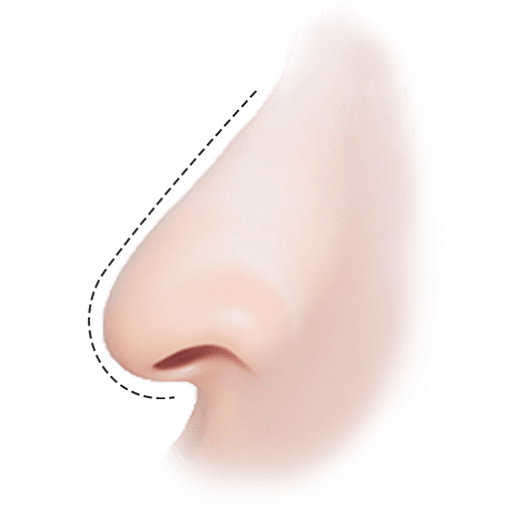
Long Nose
(Hooked Nose)
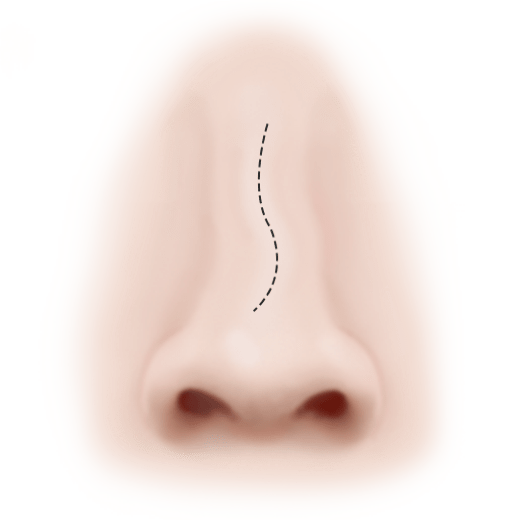
Crooked Nose
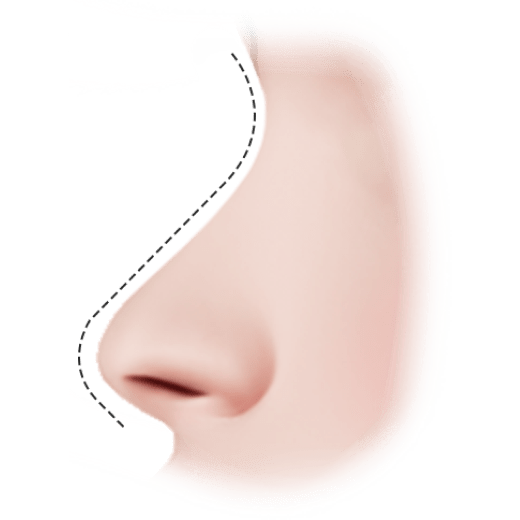
Flat Nose

Bulbous Nose
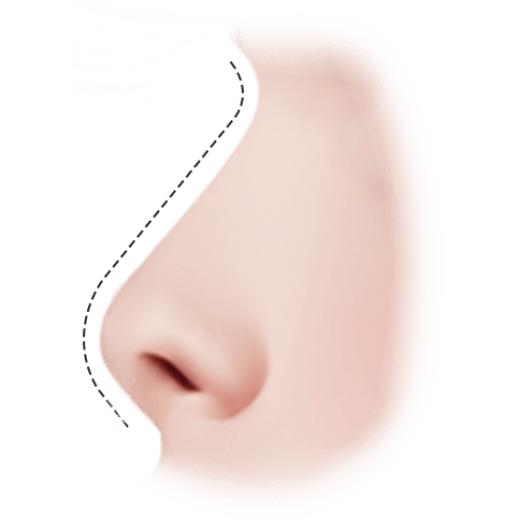
Short Nose,
Upturned Nose
Nose Types and Rhinoplasty
greatly affects one’s impression even with subtle changes,
so surgical methods should be tailored to each individual’s facial structure and nose type.
At 345 Plastic Surgery, we specialize in creating well-balanced,
three-dimensional, and aesthetically pleasing noses by studying the ideal height and shape in harmony with the face.
Rhinoplasty
Nose Types
Facial Harmony
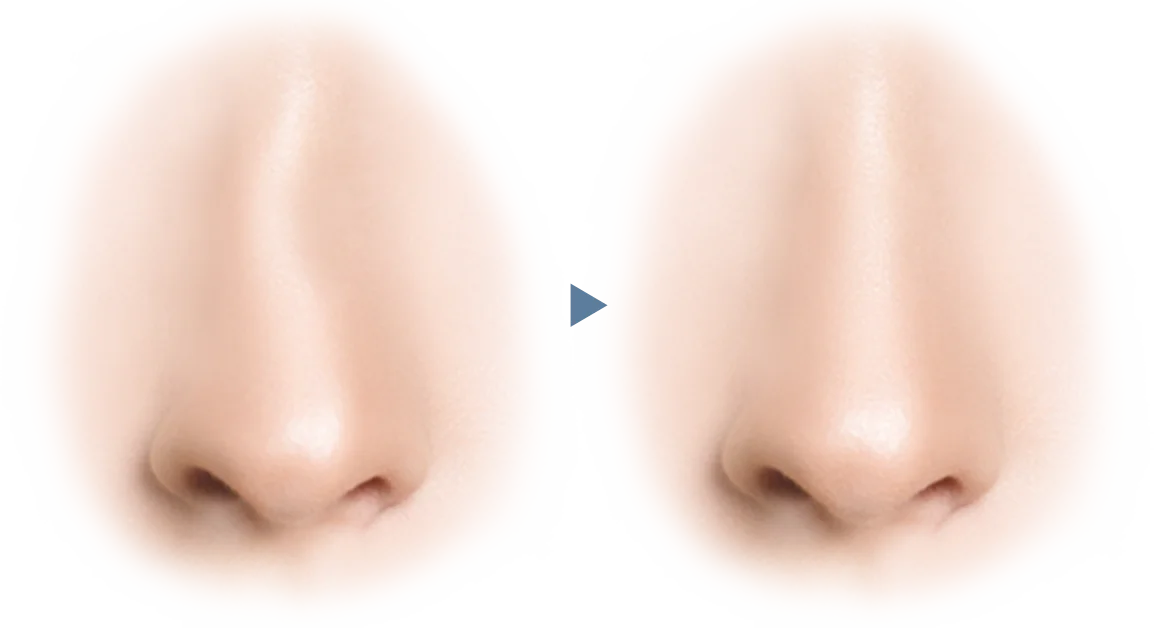
Crooked Nose Rhinoplasty
for a Balanced Nasal Line
At 345 Plastic Surgery, crooked nose correction is customized according to individual facial proportions and aesthetic standards to create a natural and ideal nasal bridge.
First, Condition-Specific Surgery
The surgical method varies depending on the degree of nasal deviation.
Second, Customized Surgical Planning
A personalized plan is developed considering the condition of both the nasal bone and cartilage.
Nose Type 06
Crooked Nose Rhinoplasty
A crooked nose refers to a deviation of the nasal bridge or tip, either congenital or acquired, corrected through surgery. It is often caused by internal structural issues or trauma, leading to facial asymmetry and breathing difficulties. Since the surgical method depends on the degree of deviation, precise diagnosis using 3D-CT and surgery by an experienced specialist are essential.
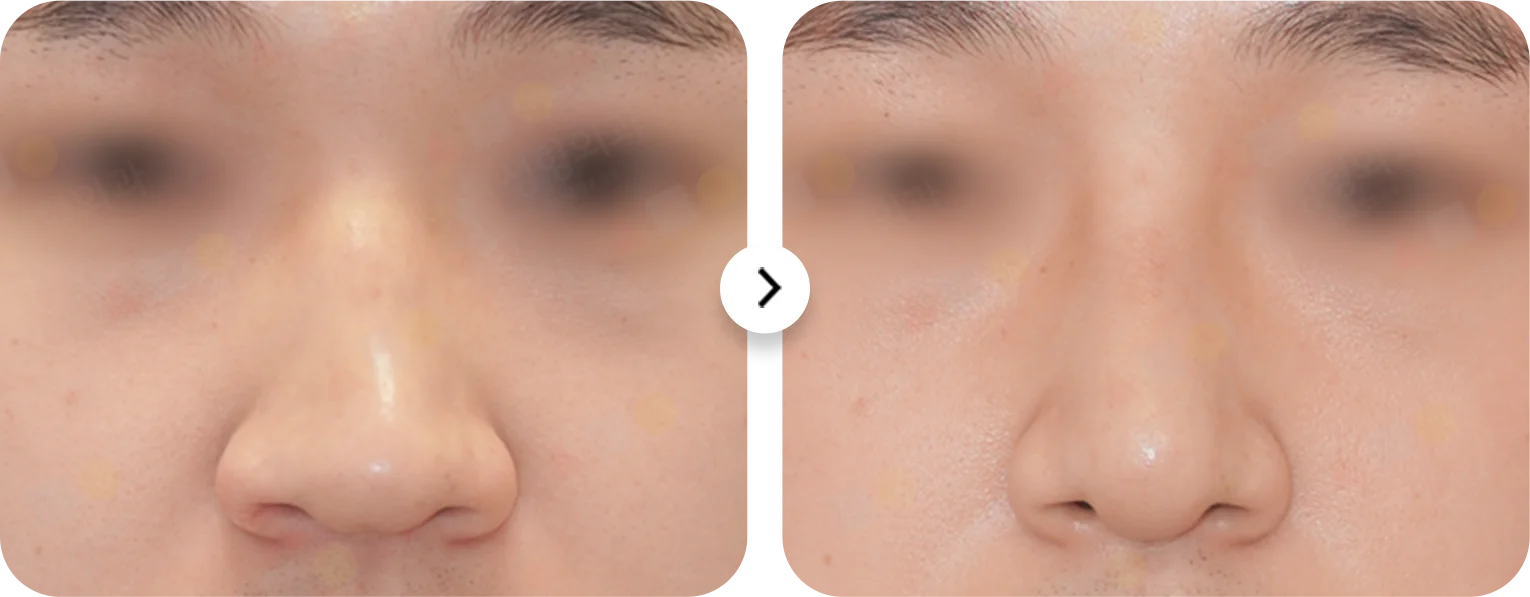
345 Youtube
Watch the Video on
Nose Types and Rhinoplasty
Dr. Song Insu, a rhinoplasty specialist, explains the surgical techniques and precautions for low nose correction.
345 YouTubeNose Plastic Surgery Process
Crooked Nose Rhinoplasty Process
at 345 Plastic Surgery
both aesthetic and functional issues for highly satisfactory outcomes.
Case
01
Mild Crooked Nose
In mild cases without the need for osteotomy, implants or cartilage grafts are used to adjust and refine the nasal bridge. Customized implants enhance the effectiveness of the correction.
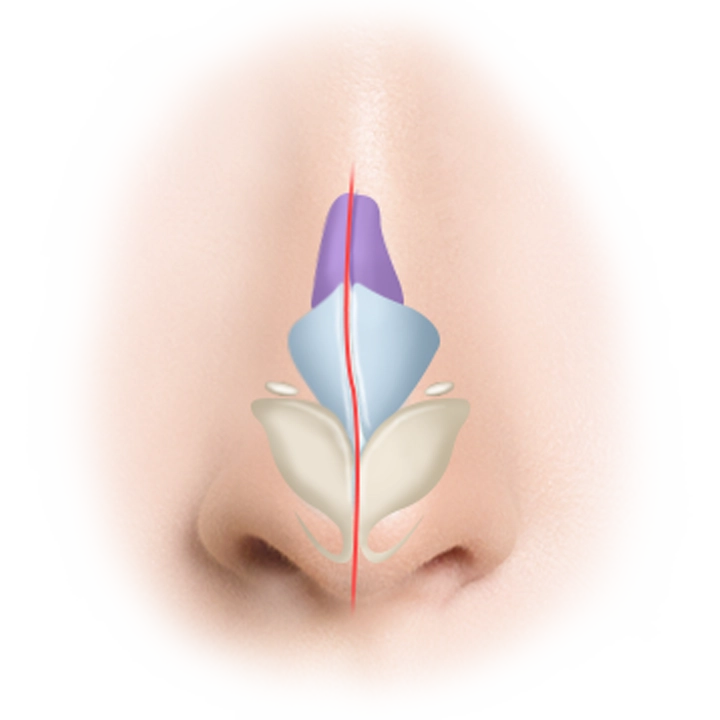
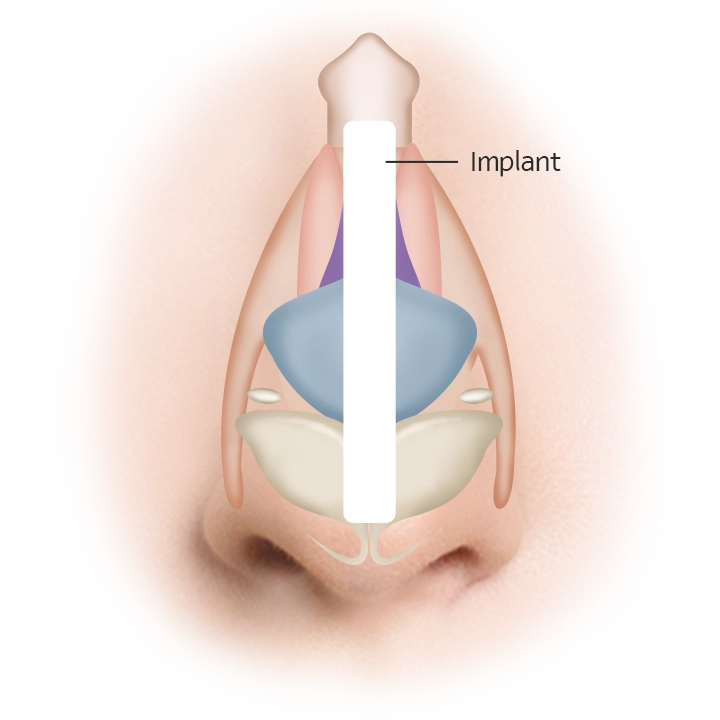
Case
02
Severe Crooked Nose
In severe cases, the deviated nasal bones are osteotomized and repositioned, and septoplasty is performed to correct cartilage asymmetry.
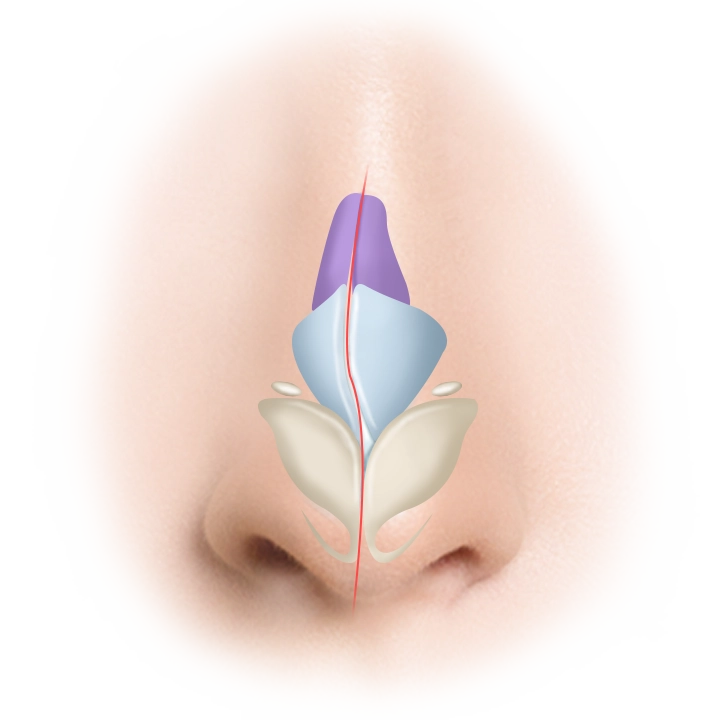
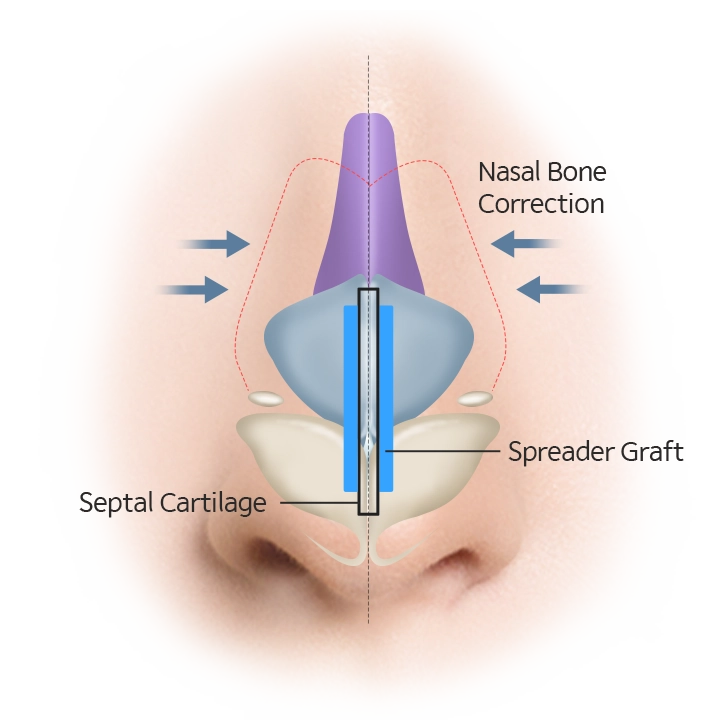
Before and After Photos of
Nose Types and Rhinoplasty
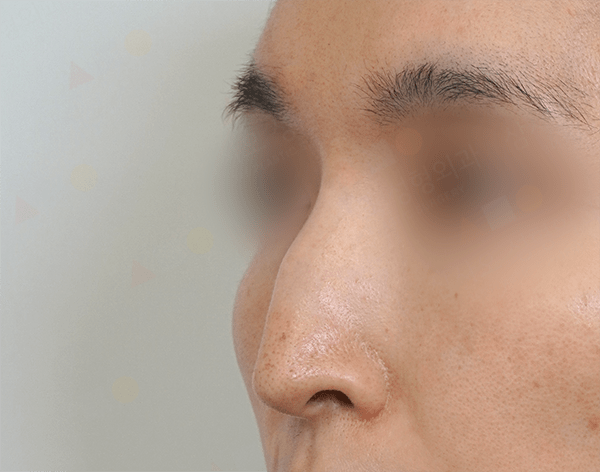
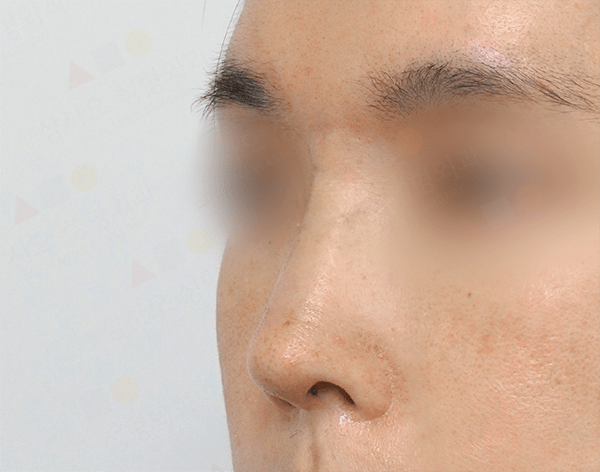


Nose Plastic Surgery info
Quick Overview of
Crooked Nose Rhinoplasty
At 345 Plastic Surgery, we create a natural and balanced nasal line through crooked nose correction based on extensive clinical experience and expertise.

Surgery Time
1 hour 30 minutes – 2 hours

Anesthesia
Sedation
Hospital Stay
Same-day discharge
Follow-Up Visits
3 visits
Recovery
5–7 days
Recommended target
Recommended for
these individuals
Are you concerned about surgery?
Feel free to inquire!
01
First, Crooked Nasal Bone
For those with a deviated nasal bone due to trauma or other causes.
02
Second, Deviated Septal Cartilage
For those with a deviated septal cartilage inside the nose.
03
Third, Deviated Implant
For those with a deviated implant after previous rhinoplasty.
04
Fourth, Severe Nasal Obstruction
For those experiencing severe nasal obstruction due to a crooked nose.
Frequently Asked Questions
About Rhinoplasty
Is implant-free revision surgery possible for contracted nose cases?
Contracture is often caused by inflammation from implants like silicone or Gore-Tex. In revision surgery, it is recommended to avoid reusing implants. If contracture is implant-related, the standard is to remove the implant and perform the surgery without it.
Is implant-free rhinoplasty possible for everyone?
Whether or not to use an implant is a matter of choice. However, there may be limitations to how much the nasal bridge can be raised without an implant, which will be explained during consultation. If the nasal bridge is of average height, enhancing the nasal tip can make the nose stand out, making implant-free rhinoplasty a viable option.
Why does nasal tip drooping occur after rhinoplasty?
Since the implant is supported by the underlying bone, collapse of the nasal bridge is rare. However, if the nasal tip is lower than the bridge, it may appear as tip drooping. If the patient is prone to tip drooping, adjusting the bridge height or using supportive materials can minimize the risk. However, due to the constant pull of gravity, tip drooping may occur over 10 to 20 years as ligaments and surrounding tissues loosen with aging. Even without surgery, the nose naturally droops over time due to aging.